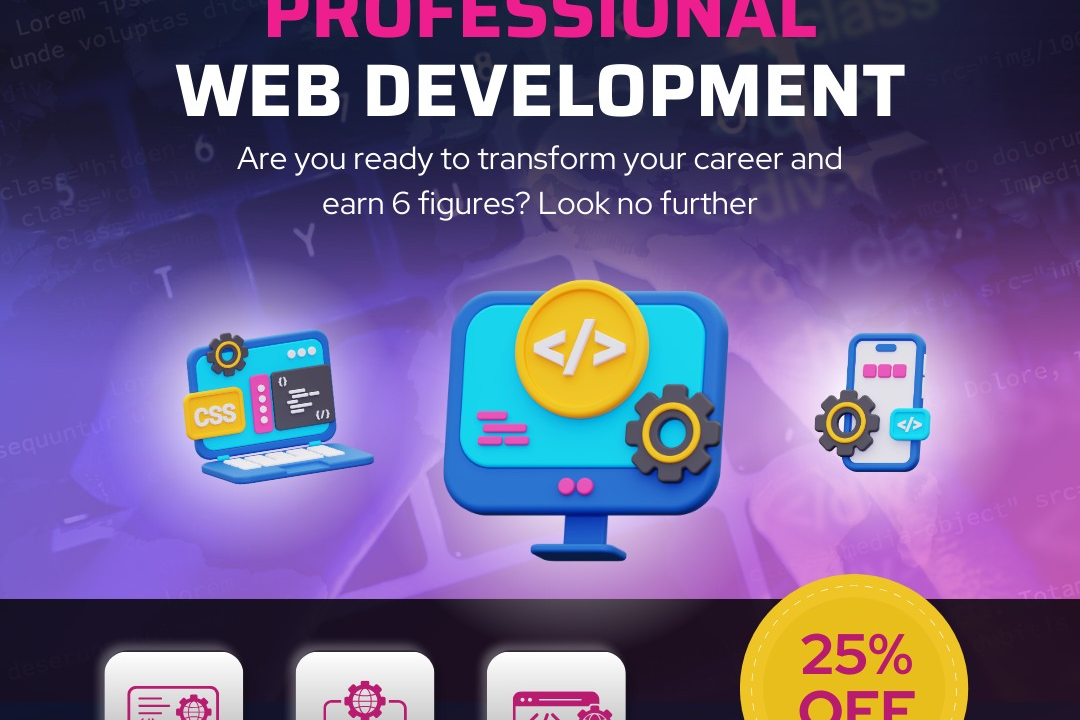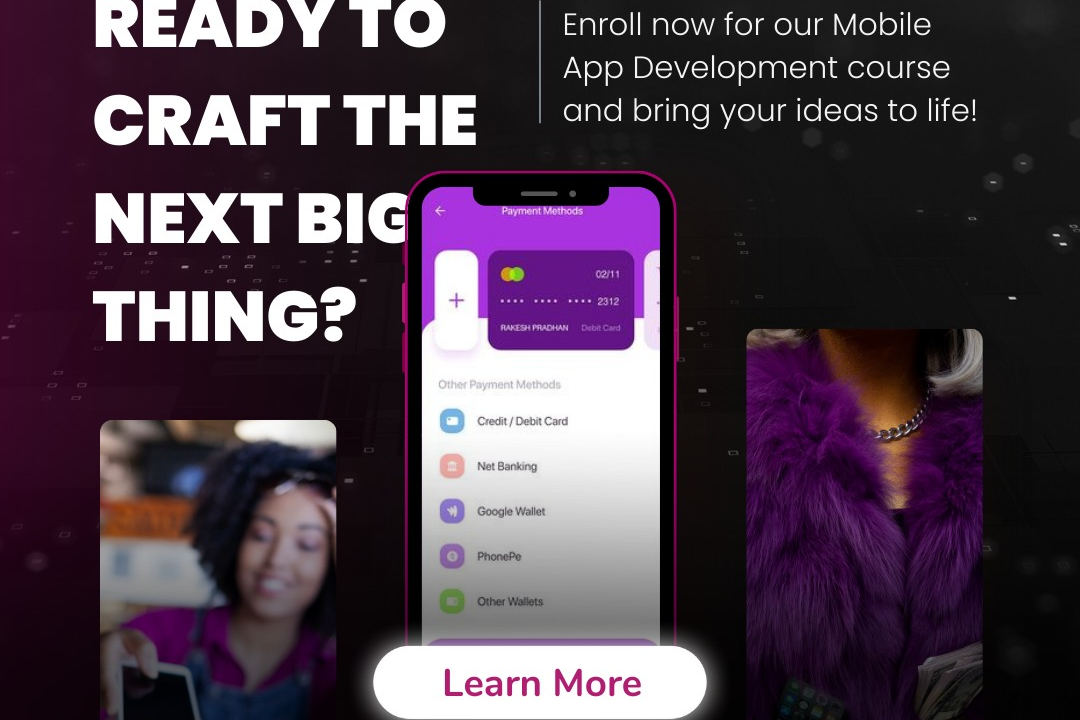Example PHP Program for Database Connection
An example PHP program for database connection demonstrates how to establish a link between a PHP sc
Example PHP Program for Database Connection
An example PHP program for database connection is essential for enabling web applications to interact dynamically with data stored in a MySQL database. By establishing a secure and reliable connection, developers can perform operations such as retrieving, inserting, updating, and deleting data in real time, which is crucial for building interactive and data-driven websites. This foundation allows applications to deliver personalized content, process user inputs, and maintain data consistency, making it a vital component in modern web development and providing a seamless user experience.
To Download Our Brochure: https://www.justacademy.co/download-brochure-for-free
Message us for more information: +91 9987184296
An example PHP program for database connection is essential for enabling web applications to interact dynamically with data stored in a MySQL database. By establishing a secure and reliable connection, developers can perform operations such as retrieving, inserting, updating, and deleting data in real time, which is crucial for building interactive and data driven websites. This foundation allows applications to deliver personalized content, process user inputs, and maintain data consistency, making it a vital component in modern web development and providing a seamless user experience.
Course Overview
The “Example PHP Program for Database Connection” course provides a concise introduction to connecting PHP applications with MySQL databases. Students will learn to establish secure connections, perform basic database operations, and handle errors effectively. This essential course offers practical, real-world skills for developing dynamic, data-driven websites and applications using PHP and MySQL.
Course Description
The “Example PHP Program for Database Connection” course teaches foundational skills to connect PHP applications with MySQL databases through practical examples. Students learn to establish secure connections, perform basic CRUD operations, and handle errors, enabling them to build dynamic, data-driven web applications efficiently.
Key Features
1 - Comprehensive Tool Coverage: Provides hands-on training with a range of industry-standard testing tools, including Selenium, JIRA, LoadRunner, and TestRail.
2) Practical Exercises: Features real-world exercises and case studies to apply tools in various testing scenarios.
3) Interactive Learning: Includes interactive sessions with industry experts for personalized feedback and guidance.
4) Detailed Tutorials: Offers extensive tutorials and documentation on tool functionalities and best practices.
5) Advanced Techniques: Covers both fundamental and advanced techniques for using testing tools effectively.
6) Data Visualization: Integrates tools for visualizing test metrics and results, enhancing data interpretation and decision-making.
7) Tool Integration: Teaches how to integrate testing tools into the software development lifecycle for streamlined workflows.
8) Project-Based Learning: Focuses on project-based learning to build practical skills and create a portfolio of completed tasks.
9) Career Support: Provides resources and support for applying learned skills to real-world job scenarios, including resume building and interview preparation.
10) Up-to-Date Content: Ensures that course materials reflect the latest industry standards and tool updates.
Benefits of taking our course
Functional Tools
1 - PHP Programming Language: PHP serves as the core scripting language used for developing server side web applications. In the course, students learn how to write PHP scripts to establish connections with databases, execute queries, and handle data processing. PHP's simplicity and widespread support make it an essential tool for web developers, enabling dynamic content generation and efficient backend logic. Through hands on exercises, learners gain practical experience in scripting, error handling, and optimizing PHP code for performance and security.
2) MySQL Database Management System: MySQL is a popular open source relational database system used to store, retrieve, and manage data efficiently. The course introduces students to MySQL commands, database design principles, and data normalization techniques. Learners are guided on how to create databases, define tables, and manage records through PHP. Understanding MySQL's architecture and functions allows students to develop scalable, reliable data driven applications and perform complex queries seamlessly.
3) PHPMyAdmin Interface: PHPMyAdmin is a user friendly web based tool used to interact with MySQL databases visually. It simplifies database management tasks such as creating, editing, and deleting databases and tables without requiring command line knowledge. The course demonstrates how to use PHPMyAdmin for quick database setup, data entry, and troubleshooting. Familiarity with this tool enhances learners' efficiency and confidence in managing database schemas and performing routine maintenance tasks.
4) Code Editors and IDEs: Development environments like Visual Studio Code, Sublime Text, or PHPStorm are essential tools for writing, editing, and debugging PHP code effectively. These editors provide features such as syntax highlighting, code auto completion, and error detection, which streamline the coding process. The course trains students to utilize these tools for writing clean, organized code, managing multiple files, and debugging issues rapidly, thereby improving productivity and reducing development time.
5) Local Server Environment (XAMPP/WAMP): XAMPP and WAMP are comprehensive packages that provide Apache server, PHP, and MySQL support on local machines. They enable students to set up a sandbox environment for developing and testing their PHP MySQL programs without needing internet hosting. The course guides learners through installing and configuring these platforms, creating virtual servers, and deploying their projects locally, which allows for experimentation, learning, and troubleshooting in a controlled environment.
6) Web Browsers for Testing: Modern browsers such as Google Chrome, Mozilla Firefox, or Microsoft Edge are essential tools for testing and debugging web applications. The course emphasizes using browser developer tools to inspect PHP generated web pages, review network requests, and troubleshoot display issues. Learners learn to test their database connected applications across different browsers and devices, ensuring responsiveness, compatibility, and a seamless user experience.
7) Database Design Tools: Software like MySQL Workbench assists students in designing, modeling, and visualizing database schemas before implementation. These tools help in creating ER diagrams, defining relationships, and generating SQL scripts visually. The course introduces students to designing robust database structures, optimizing data organization, and maintaining data integrity, which are crucial skills for building efficient backend systems.
8) Version Control Systems (Git): Using Git allows students to track changes, manage code versions, and collaborate effectively in teams. The course trains learners to initialize repositories, commit changes, and push updates to remote platforms like GitHub. These skills are vital for maintaining code quality, restoring previous versions if needed, and working efficiently in a team environment, especially for larger projects involving database integration.
9) Error Logging and Debugging Tools: Tools like Xdebug or built in error logs help students identify issues in their PHP scripts related to database connectivity or query execution. The course emphasizes debugging techniques, interpreting error messages, and resolving common connection problems. Mastery of these tools enables learners to troubleshoot their programs swiftly, ensuring reliable and maintainable code.
10) Documentation and Commenting Tools: Proper documentation tools and practices encourage students to annotate their code effectively, making it easier to understand and modify later. This includes using inline comments, README files, or documentation generators. The course highlights the importance of clear documentation in maintaining projects, collaborating with others, and adhering to best practices in software development.
11 - Secure Coding Practices: The course covers techniques to write secure PHP scripts, including input validation, parameter sanitization, and protection against SQL injection and cross site scripting (XSS). Students learn to implement security measures to safeguard user data and prevent common vulnerabilities, ensuring their applications are robust and trustworthy.
12) API Integration Tools: Learners are introduced to working with APIs (Application Programming Interfaces) to extend the functionality of their web applications. The course demonstrates how to connect PHP with third party services, retrieve data, and process responses, enabling students to develop feature rich and dynamic applications.
13) Web Hosting Platforms: The course provides insights into deploying PHP MySQL applications on live web hosting services such as shared hosting providers or cloud platforms like AWS or Azure. Students learn the deployment process, configuration, and management of their projects in a live environment, preparing them for real world deployment scenarios.
14) Performance Optimization Tools: Techniques for optimizing PHP code and database queries are included in the curriculum. Learners explore indexing, query caching, and code profiling to enhance application speed and responsiveness, ensuring scalable and efficient solutions.
15) Backup and Recovery Solutions: The course emphasizes the importance of regular database backups and recovery procedures. Students learn how to automate backups, restore databases, and implement disaster recovery plans—critical skills for maintaining data integrity and system availability.
16) Automated Testing Frameworks: Introduction to testing tools like PHPUnit enables students to write unit tests for their PHP code. This practice leads to more reliable applications by catching bugs early and facilitating continuous integration and delivery workflows.
17) Learning Management System (LMS) Integration: The course discusses integrating PHP MySQL applications with LMS platforms to create e learning solutions. Students explore user authentication, content management, and progress tracking functionalities relevant to education technology.
18) Content Management (CMS) Development: The curriculum guides students on building or customizing content management systems using PHP and MySQL, empowering them to create flexible websites with dynamic content updating capabilities.
19) Responsive Design Tools: Though primarily focused on backend development, the course touches on integrating PHP with front end frameworks like Bootstrap, ensuring web applications are mobile friendly and responsive across various devices.
20) Community Support and Resources: Students gain access to online communities, forums, and documentation repositories for PHP and MySQL. Learning to leverage these resources enhances problem solving skills and encourages continuous learning and support.
21 - Certifications and Industry Recognition: After completing the course, learners receive industry recognized certification from JustAcademy, validating their skills in PHP and MySQL development, opening doors to internships, freelance projects, or full time employment.
22) Collaborative Development Platforms: Exposure to platforms like GitHub or GitLab helps students understand collaborative development workflows, pull requests, and code reviews, laying the foundation for professional software development practices.
23) Real World Project Experience: The course emphasizes hands on projects that simulate real world scenarios, enabling students to build comprehensive web applications with backend integrations, ultimately boosting their portfolio and practical understanding.
24) Continuous Learning Resources: Access to updates, webinars, workshops, and advanced modules ensures students can stay current with evolving technologies, trends, and best practices in PHP and database development.
25) Customer Data Privacy and Compliance: Training includes understanding legal and ethical considerations, such as GDPR compliance and secure data handling, vital for developing applications that respect user privacy and adhere to regulatory standards.
Browse our course links : https://www.justacademy.co/all-courses
To Join our FREE DEMO Session: Click Here
This information is sourced from JustAcademy
Contact Info:
Roshan Chaturvedi
Message us on Whatsapp:
Email id: info@justacademy.co











